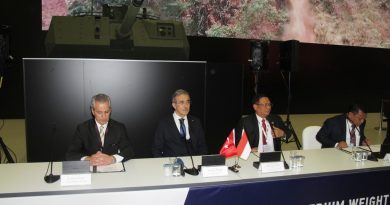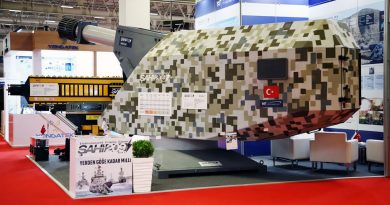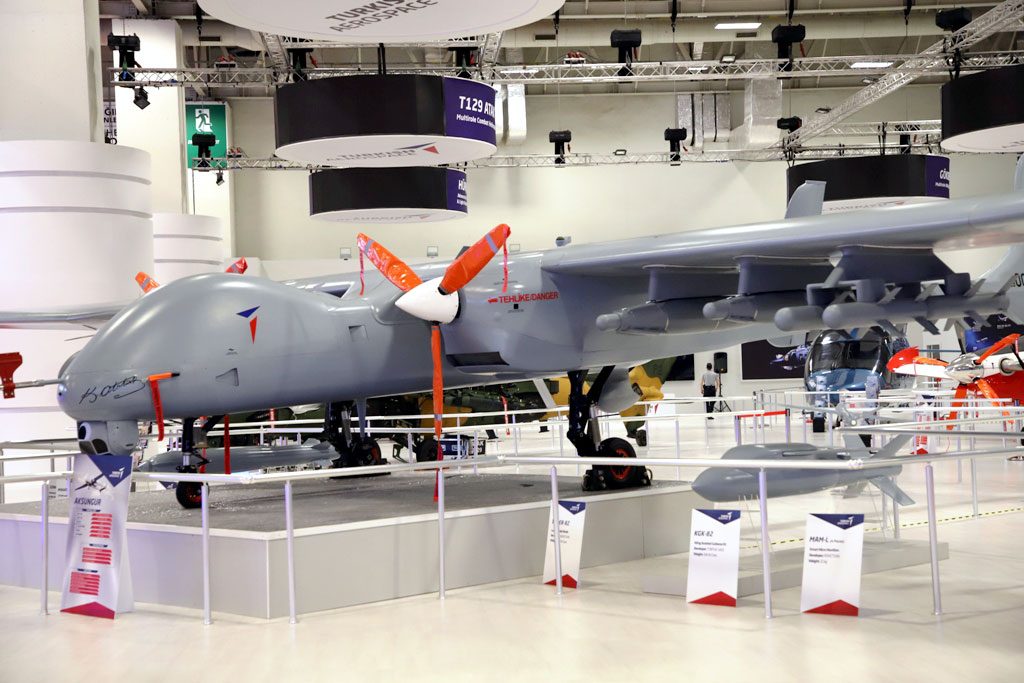
IDEF 19: Turkish Aerospace introduces its new Aksungur MALE
Dominating the Turkish Aerospace stand was the new Medium Altitude Long Endurance (MALE) UAV developed by the company and known as Aksungur, which flew for the first time on 20 March. A 3,300 kg MTOW aircraft with a 24 meters wingspan, the Aksungur has a twin tail boom with conventional rudders and ailerons, compared to the “V” tail of the smaller Anka. But the most important difference is the power plant, based on two engines rather than one.
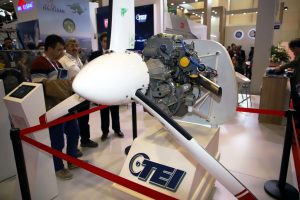
In its final configuration the Aksungur will be fitted with two PD170 dual-turbo diesel engines provided by Tusas Engine Industry (TEI), however the development seems to be carried out with an existing engine, the TEI one having flown for the first time on 27 December 2018 on an Anka and being thus in the test and qualification phase. The PD170 is a water cooled engine specifically designed for MALE UAVs and ensures a high power-to-weight ratio, its dry weight is 165 kg versus a 170 hp output (with growth potential), low fuel consumption, less than 210 grams per kWh, and good power output even at high altitude: the engine ensures full power output up to 20,000 ft, decreasing to 130 hp at 30,000 ft and to 90 hp at 40,000 ft. Gearboxes are available both for pushing and pulling propellers, the latter being the solution adopted on the Aksungur. The redundancy provided by the two engines configuration ensures higher reliability and maximises the chance to come back to base even in case of failure on one of the engines, something very important in missions, such as maritime patrol, when often the value of the on-board sensors exceeds that of the airframe itself.
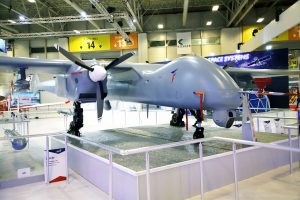
“Other benefits come with the two engines solution, such a greater stability and an easier control of the aircraft,” Berkay Pamuk, an Aksungur flight test engineer and former Turkish Air Force UAV pilot tells EDR On-Line, underlining that the new UAV developed by TAI has numerous autonomous functions that considerably reduce the pilot workload. “The over four hours flight was much more than the typical take-off, circuit and landing typical of a maiden flight, as we tested many of the flight modes, checked autopilot gains, and also carried out some limited manoeuvres with small control roll and pitch inputs,” he adds, underlining how the landing was performed perfectly by the automatic system, which is a derivative of that adopted on the Anka. In its two flights prior to the exhibition the new twin-engine UAV logged over 10 hours, a third flight being expected very soon after IDEF, while endurance tests are planned for summer 2019; the development test flight phase is expected to be completed within year end, when the PD170 engines should be installed, the signature of a first contract being also awaited.
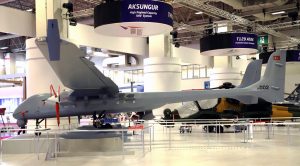
Definitely a crash programme, the time from the beginning of the development to the first flight has been of around 18 months. The first flight take-off run was between 500 and 600 meters, the aircraft not being obviously at MTOW, “however we expect to have an MTOW run shorter than that of the Anka, which means between 900 and 1,000 meters,” Pamuks says, explaining that the flight is quite different from that of the smaller UAV due to the total different tail, and that the first take off took place around 69 knots. The front hump contains SATCOM antennas, two of them being fitted to the Aksungur, two more line-of-sight links being also available, with hand over capability between ground stations to allow extended range missions even without using SATCOMs.
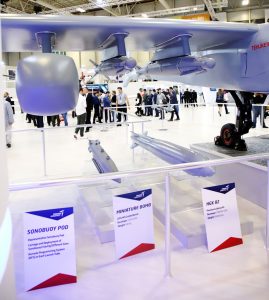
Redundancy is applied not only in data links but in all the areas, the air vehicle being designed to NATO standards and being fitted with three GPS/IMU navigation systems, two on-board flight computers and dual redundant electric power generation systems. Coming to the payload, the Aksungur has a maximum payload of 750 kg, three hard points per wing being available. On the air vehicle exhibited at IDEF, starting from the extreme right we could find the mock-up of a sonobuoy pod capable to host 18 sonobuoys and to receive their signals, providing the data to the Aksungur data link system to relay them on the ground. On the central hard point under the right wing we could fin a Miniature Bomb, a 140 kg ordnance fitted with a set of wings allowing it to fly up to 55 nautical miles from the release point at maximum altitude, its GPS/INS guidance system ensuring a CEP under 15 meters. The inner pylon was loaded with a Tübitak Sage HGK 82 (Hassas Güdüm Kiti for precision guidance kit), the number indicating that the kit is installed on a Mk 82 500 lb bomb; the kit provides a CEP of less than 10 meters with INS/GPS guidance and less than 25 meters with INS only guidance.
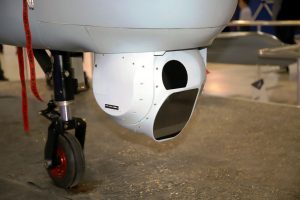
An optronic gimbal is installed under the chin, the UAV being able to accept systems developed by different companies, according to customers’ requirements. Under the fuselage, in central position the Aksungur can carry a synthetic aperture radar (SAR), which was however not visible at IDEF; Aselsan developed the Sarper SAR, an X-band radar with different operational modes, SAR Spotlight, SAR Stripmap, Ground Moving Target Indicator, Inverse SAR and 360° Sea Search.

Shifting to the left wing, the inner and central pylons were fitted respectively with a Roketsan’s 500 lb Teber-82 and a 250 lb Teber 81 laser guided bombs, the external pylon hosting a quadruple launcher armed with Roketsan’s MAM-L smart micro-munition, each weighing 22 kg, considering the number of pylons, the Aksungur can carry up to 24 MAM-L, which gives it a considerable attack capability against multiple targets. In place of the Teber 82 a Tübitak Sage KGK-82 (Kanatlı Güdüm Kiti for wing-assisted guidance kit) was also proposed.
Endurance depends very much on the payload, the ferry configuration allowing for a 40 hours plus flight; in the SIGINT mission configuration, considering a 150 kg payload and a 35,000 ft flight altitude endurance is over 24 hours, while in the ground attack or maritime patrol missions configurations, at full payload, operational latitude is 25,000 ft and endurance is of 12 hours.
Photos by Paolo Valpolini


